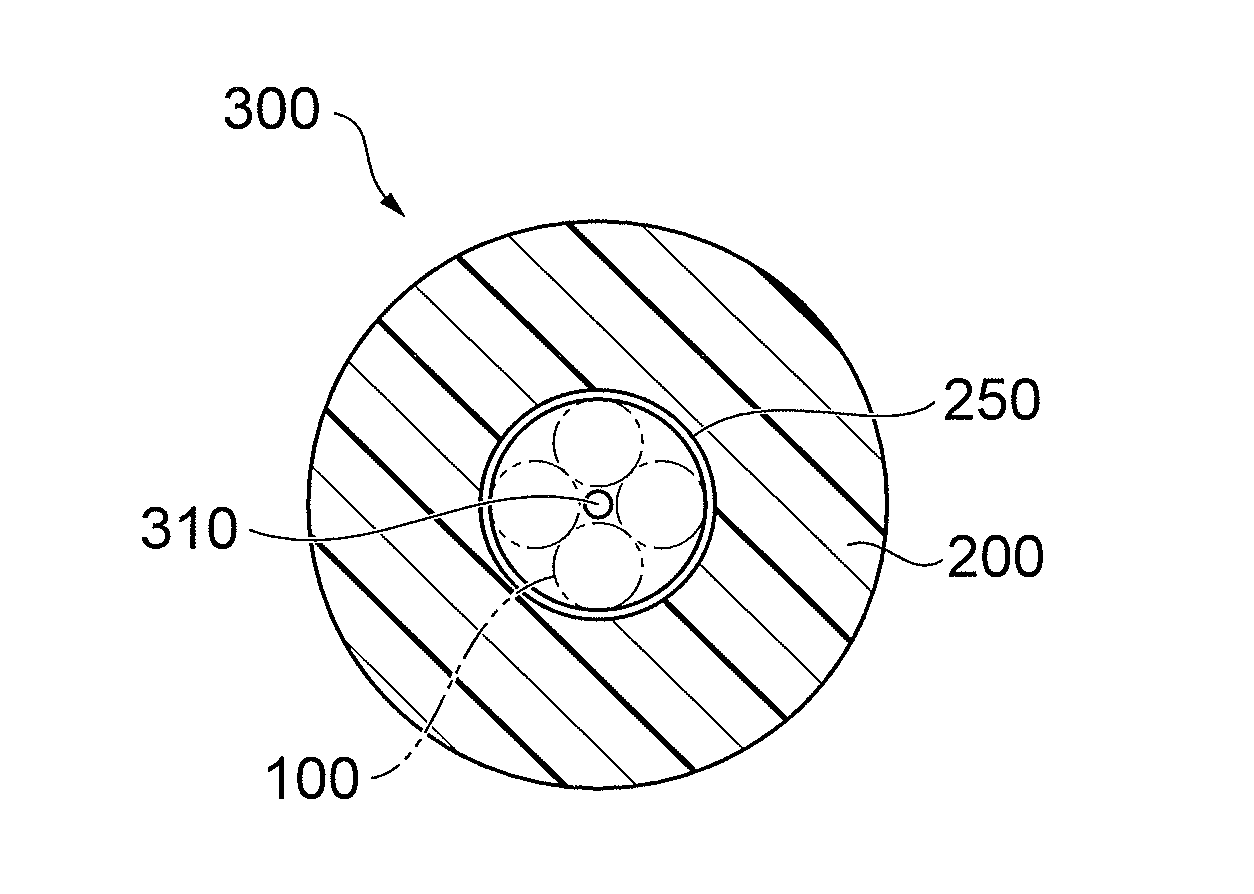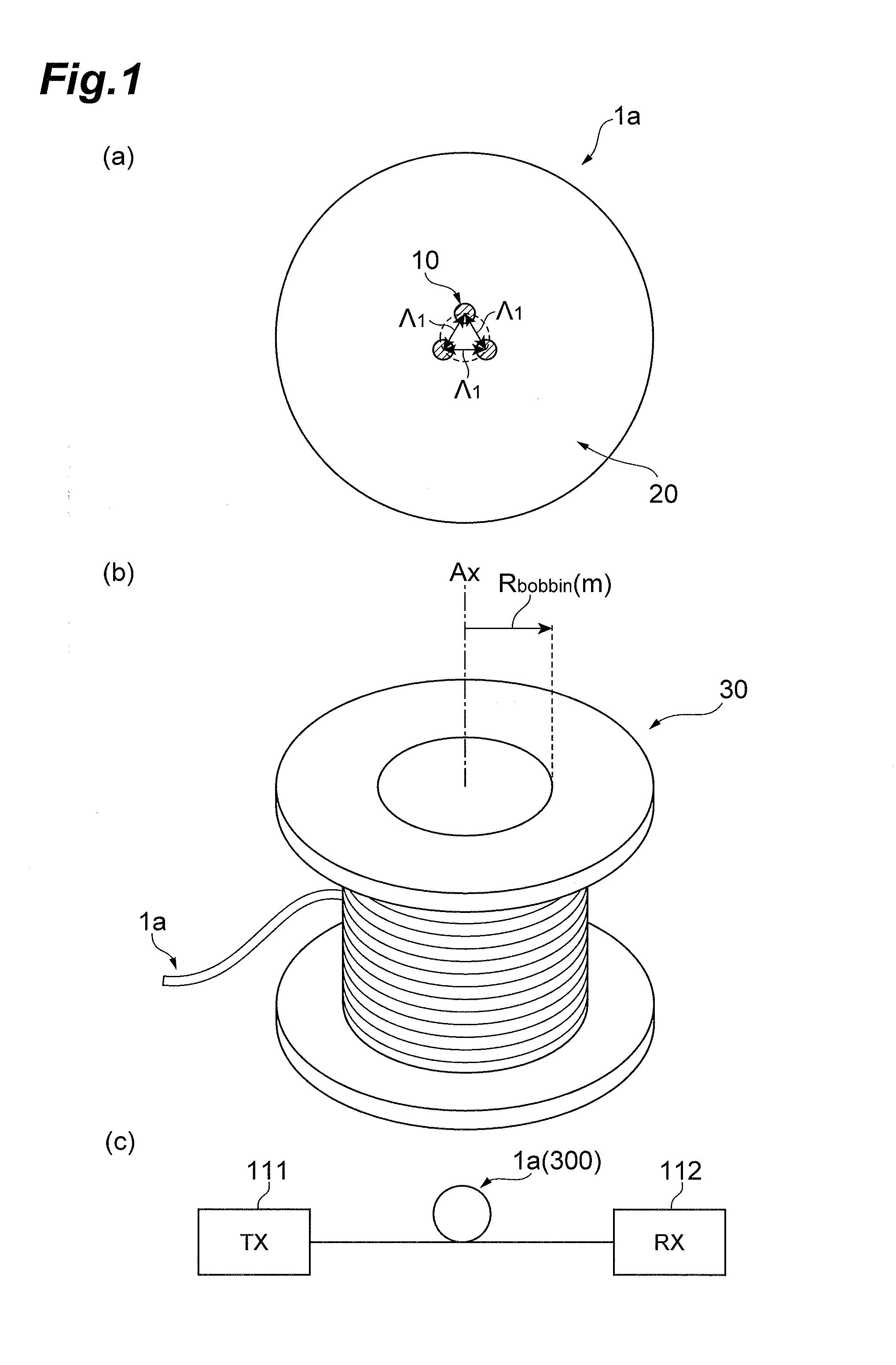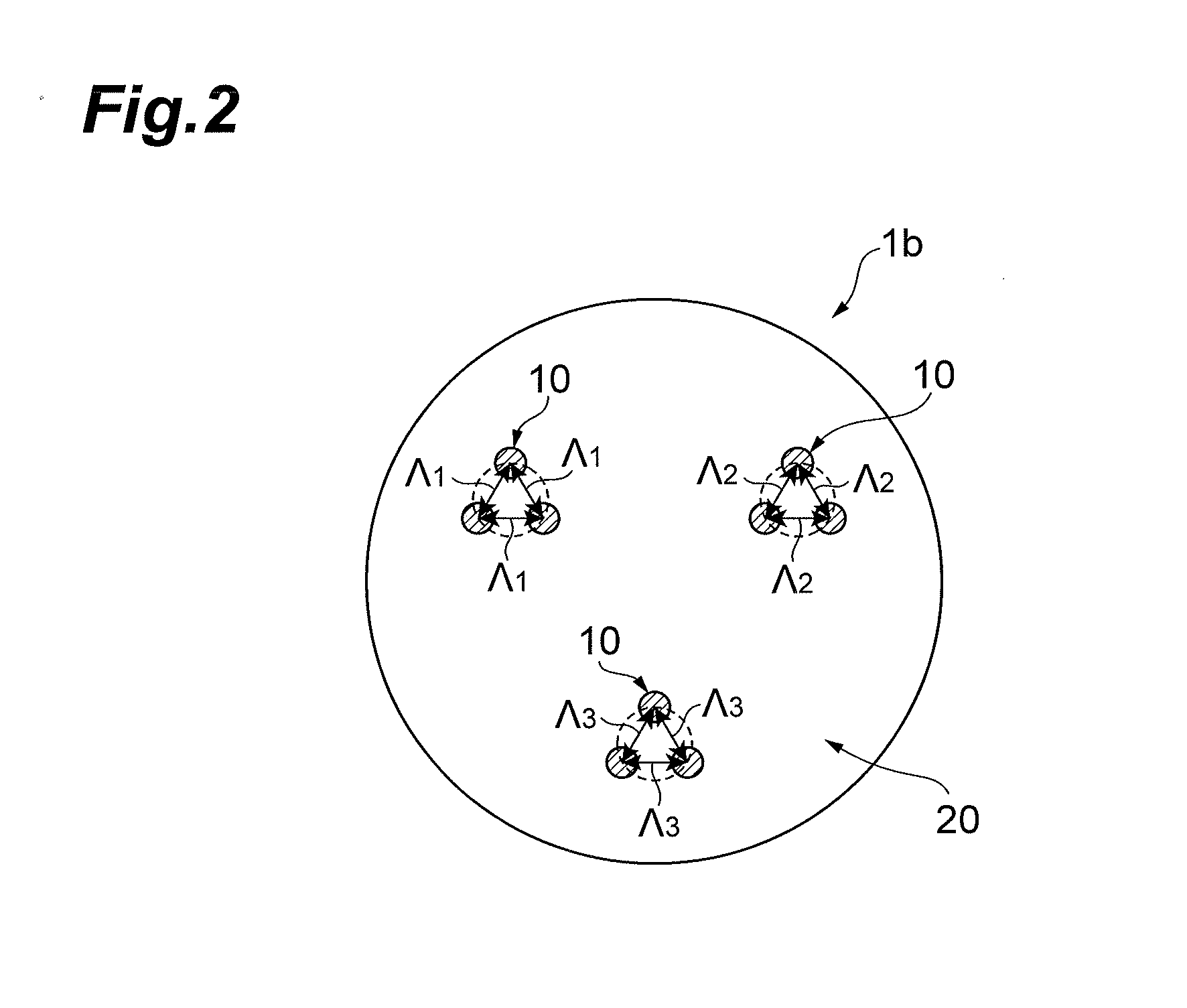Multi-core optical fiber, multi-core optical fiber cable, and multi-core optical fiber transmission system
a transmission system and multi-core technology, applied in the direction of cladded optical fiber, instruments, optical elements, etc., can solve the problems of large calculation load (mimo calculation) for crosstalk compensation by mimo technology, and it is difficult to select a preferred multi-core optical fiber for use of mimo technology, so as to improve the confinement of light, increase the core pitch, and calculate effectively
- Summary
- Abstract
- Description
- Claims
- Application Information
AI Technical Summary
Benefits of technology
Problems solved by technology
Method used
Image
Examples
Embodiment Construction
[0027]Embodiments of the present invention will be described below in detail with reference to the accompanying drawings. The same elements will be denoted by the same reference signs in the description of the drawings, without redundant description.
[0028]The below will first describe influence of magnitude of inter-core DGD in the MIMO (Multiple-Input and Multiple-Output) technology, and then describe the multi-core optical fibers and others according to embodiments of the present invention.
[0029]In the MIMO technology, there are known techniques of compensating the crosstalk between spatial modes and implementing spatial multiplexing (core multiplex / mode multiplex) transmission, but real-time processing is not realized yet because of large computational complexity. Specifically, as the differential group delay between spatial modes (inter-mode DGD) becomes larger, the computational complexity in execution of MIMO computation also needs to increase in proportion to the magnitude of...
PUM
 Login to View More
Login to View More Abstract
Description
Claims
Application Information
 Login to View More
Login to View More - R&D
- Intellectual Property
- Life Sciences
- Materials
- Tech Scout
- Unparalleled Data Quality
- Higher Quality Content
- 60% Fewer Hallucinations
Browse by: Latest US Patents, China's latest patents, Technical Efficacy Thesaurus, Application Domain, Technology Topic, Popular Technical Reports.
© 2025 PatSnap. All rights reserved.Legal|Privacy policy|Modern Slavery Act Transparency Statement|Sitemap|About US| Contact US: help@patsnap.com



